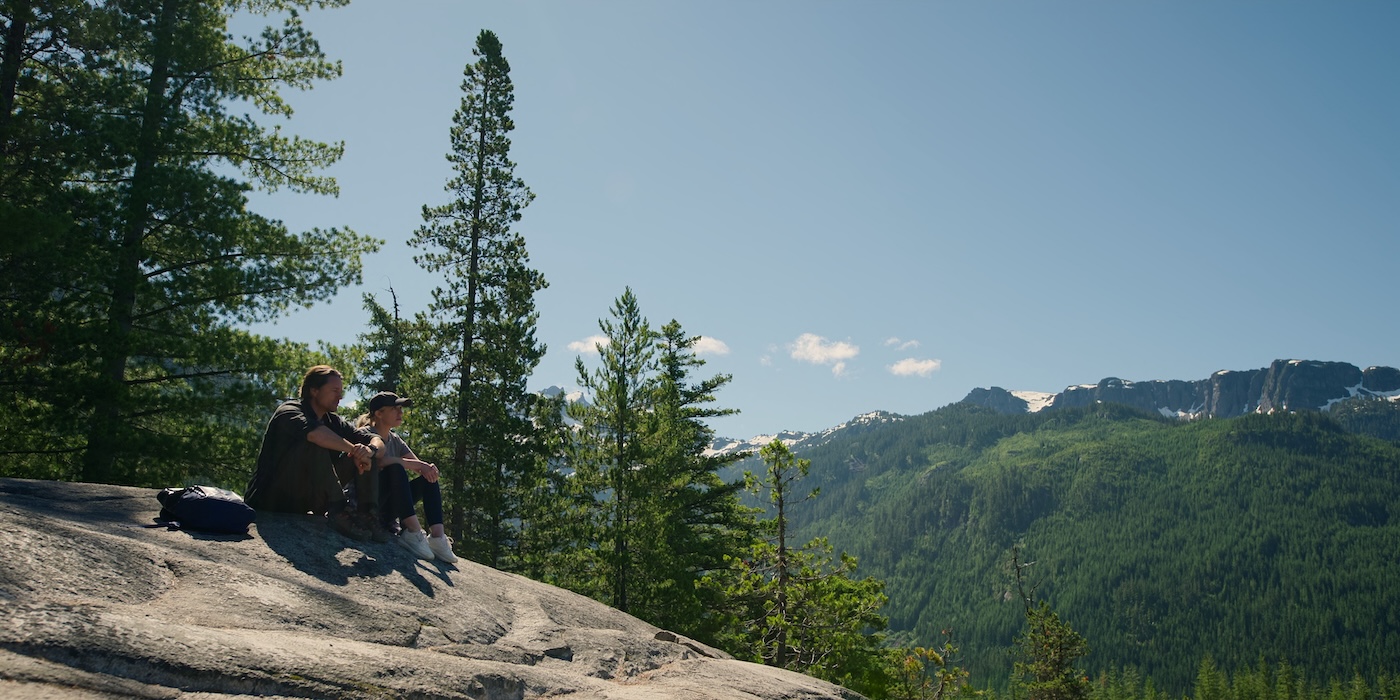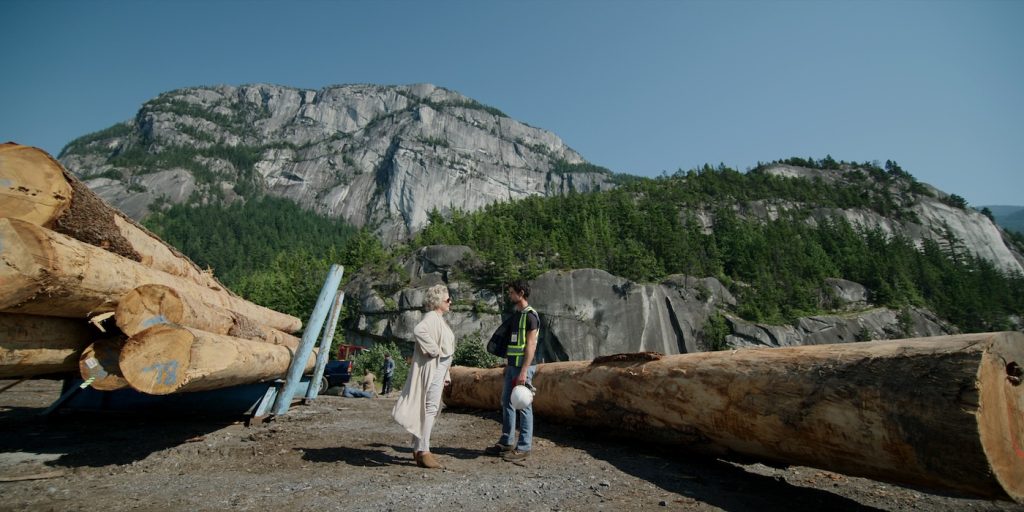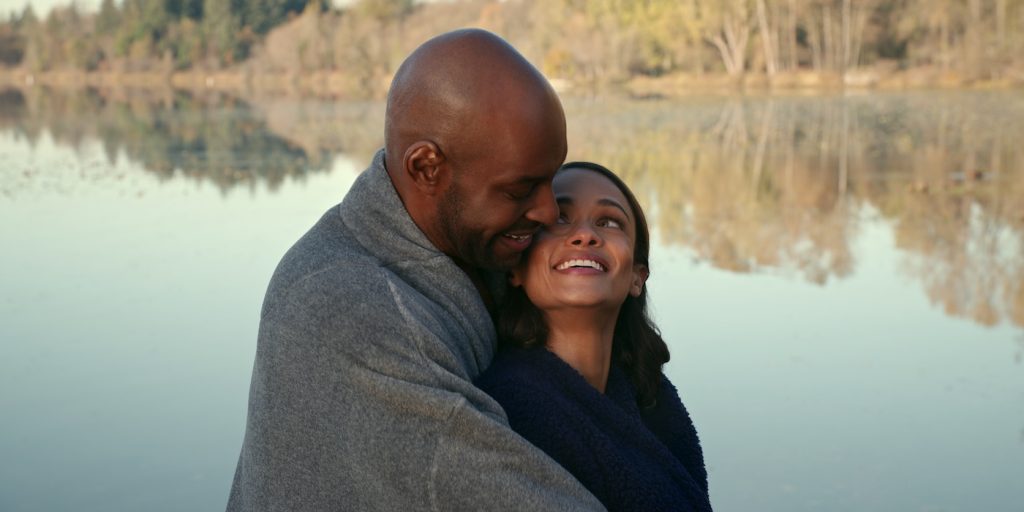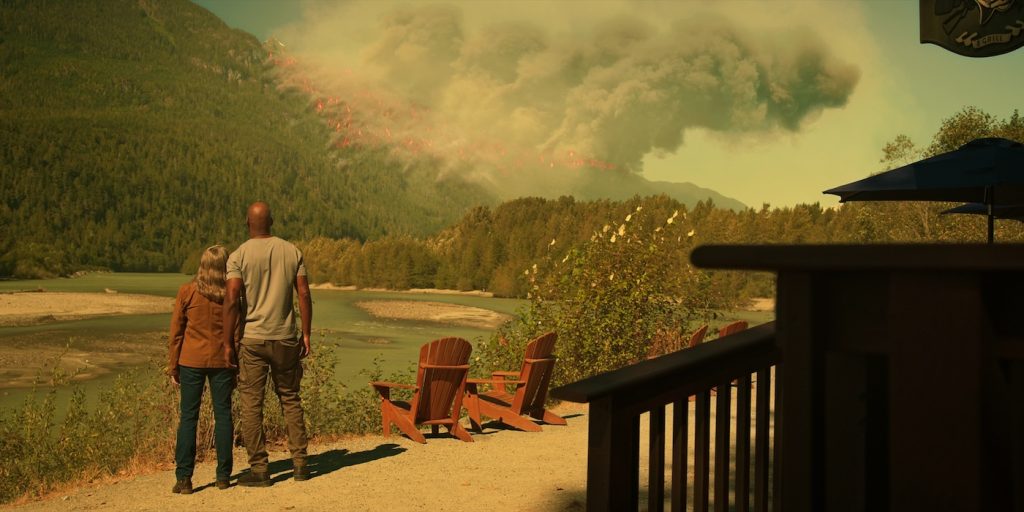
A film or TV set is usually powered almost exclusively by diesel generators. These generators were loud, hot, large, environmentally unfriendly, and often used at such a low capacity that they were practically idling. They weren’t just bad for the environment; they were wasteful and highly unpleasant.
This is increasingly no longer the case, as new technologies come onto the market and new, less fuel-dependent approaches to how filmmakers and TV creators get their shots become possible. According to Clara George, the Regional Sustainability Advisor for Netflix in Canada and a veteran of the industry with over 30 years of experience as a line producer, the key is crew buy-in. As a former line producer, George knows first-hand how crews are the power generators of any film or TV set, and the key to her work is incentivizing the crews to embrace the opportunities inherent in greening up a production. “If you want something done, you get a film person to do it,” George says. She knows this to be true from vast experience.
George and the crew of Netflix’s Virgin River are leading by example. By implementing clean mobile power on the series, they’ve greatly reduced the use of diesel generators and gas-powered vehicles on set. Whether deploying batteries, hybridizing a battery, or tapping into the local grid, what’s happening on Virgin River is part of a larger effort to create a more environmentally friendly approach to filmmaking.
From the creators and producers to the grips and the gaffers, the Virgin River team has embraced the challenge and made it a part of their mission. We spoke to George about piloting brand-new technology, the beauty of the battery, and how creating a greener set means creating a more pleasant working environment.
Can you tell me a bit about how you went from being a line producer to a Sustainable Production Advisor for Netflix?
I was a line producer for over 30 years. During the last few years of producing, I became cognizant of green productions, which got me involved with Reel Green, part of the BC Film Commission. They’re a group of stakeholders who work together to support the greening of productions across BC. I’m trying to produce this sustainable movement by working directly with production. Virgin River came under my watch because I’m based in Vancouver and Canada’s regional sustainability advisor. What that means is I partner with Netflix’s sustainability team as on-the-ground support to identify opportunities where we can reduce emissions on set. I first met with the crew during production for season four and started bringing up the conversation about what we could do better. I’ve been working with them for the last three seasons.
A TV production has so many moving pieces; how do you approach implementing sustainable practices for such a complex machine?
We’re working on decarbonization, and on a production the primary way to do that is to reduce how much fuel is burned. So we’re looking specifically at the fuel used in diesel generators and the fuel used in all the transport vehicles to move the production around. That streamlines everything in the beginning—who needs power, where they need power, how can we replace it, and how can we encourage clean power? We identified which vehicles drive the most, and if they are replaceable, how can we replace them? Film people know how to do this. We’re really good multitaskers. If there’s a problem and you need to figure out how to put the crane on the mountain, we figure it out.

I’ve heard this theory for years now: ” If only the world were run by film crews.”
By being able to introduce this as a challenge for the crew, the crew is a partner, and I’m just helping guide them. We also had a really incredible production sustainability advisor on the ground, Diana Donaldson, who has worked on Virgin River for the last two seasons. She was the go-to person daily.
Can you walk me through how the process of greening Virgin River worked practically?
We started with a concept meeting. Just as you would when you get a script, I went into the office and met with the line producer and the production manager, the locations manager, the rigging gaffer, the transportation coordinator, the sustainability coordinator, the production coordinator, and the accountant, and we asked ourselves where do we see an opportunity, and then you lean into the opportunities. Every show is completely different. What’s great about Virgin River is that they often have the same crew season over season; it’s a similar storyline, it’s a similar schedule, and they have recurring locations they use to make those beautiful vistas, so they could absorb this information by adding another layer to what they had to do because the other layers were already familiar.

How did this evolve season over season?
At the beginning of every season, they say, “Okay, Clara, what do you want to try? What’s the new technology?” Virgin River has piloted brand-new technology, and then they report back to the vendors and me, and I report that internally. We look at what’s working and what’s not, the same approach as running a production. I think that’s how we’re going to green the film industry. We’re not going to green it with a bunch of outside parameters. We need people who know what their jobs are and where the opportunities are. That’s what keeps it from being overwhelming. The crew of Virgin River knows exactly what they need all the time.
Can you speak to some of the technology you’ve piloted on the series?
We’re using clean mobile power to replace diesel generators and temporarily accessing the electric grid where possible diesel, which is what people used to call generators. The easiest way to replace a power source is to access the grid power; if you’re shooting in a factory, use their power instead of our own power source. The other thing we lean into is battery storage units for a with a lot of power needs. They come in various sizes, from small to extra large, and they’re all used for different things. Virgin River shoots in the middle of the mountains or on lakes, and it’s actually easier for them to bring in a small battery to power the video village, the crane, or whatever lighting they need. Introducing small battery technology was a game changer for them because they could access locations they would have never been able to get to with power. And, the larger batteries will run your set all day long. I think they had one battery on season four, two on season five, and eight on season six.
What about transportation?
With electric vehicles, it’s the same thing—what can you replace? So, when we started this program in season four, having an electric vehicle on a film set was incredibly rare. They said, “There’s no way; we don’t know where we’re going to charge.” Then, in season five, they had ten, and in season six, the technology had evolved, so now they had electric cargo vans, electric pickup trucks, and electric five-ton trucks. The goal is always to make the schedule, get the shot, and make it look as fantastic as possible. All we’re doing is saying, “Hey, there’s another way.” It benefits them, and they enjoy it.
I imagine that batteries and electric vehicles make the set a much more pleasant workplace.
Absolutely. One of the traditional uses for mobile power is the catering truck and the mobile kitchen. So you’re on set, you finally get a break, you’re trying to eat your lunch, and you’re surrounded by diesel engines and fumes. Everybody on the crew has noticed that the catering truck is now silent. You can actually hear people talking; you’re getting a mental break. Virgin River made a point in season five to see how long they could go without turning on diesel at the set, so it was quiet for the actors, the director, and everybody. In the studio, it’s mostly silent, and then you go on location, and it’s all about how far away the diesel generator needs to be so it’s not picked up on the mic. But people are working near the generator, so the further you go from the actors, the louder it gets. You’re constantly hearing this noise. We’ve received many compliments on how much easier it is to think. It’s that simple.

And the batteries must have less additional equipment.
They have less cabling. Generator cables are incredibly heavy, and it’s back-breaking work. That doesn’t have to happen now. You can put the battery right beside you and you can’t hear it. And, of course, there aren’t any fumes and heat. When we have heat waves in the summer, and you’re standing next to a diesel generator? It’s not good.
What kind of benefits are you seeing for the communities you’re filming in?
We are using an electric cargo van in locations, and it’s great because we have curfews and don’t want to upset the neighbors. So the batteries, the tie-ins, and the electric vehicles all create a more pleasant work environment, not just for those working on the show but for the entire community. There are a lot of communities in Vancouver that have clean energy incentives from the city and various municipalities that will give you a break on your permitting fees if you can eliminate a generator because the number one neighborhood complaint is generators. It really is where the industry needs to move..
How quickly is the battery technology improving?
The technology is developing quickly, and the crews are also starting to understand how much power they use. Manufacturers and rental companies will tell you that the generators are so underutilized, usually only running at a ten percent load. They’re efficient at seventy percent, and they idle at anything below fifteen percent. So, instead of needing to bring in the big generator and experience all those side effects we’ve mentioned, they can see what they need. If you’re only shooting in the location for a couple of hours and only need to power the video village, it’s grab-and-go.
How do you see this playing out in the broader entertainment industry?
It’s really interesting because, like anything else on a film set, if you follow the same process and if you have great leaders on the production team who have a strong voice and say this is important to them, then the crew picks up on that and says, ‘Okay, let’s get this done.’ There’s always one champion in every department, and there’s always one champion at the top. Everybody understands the idea of saving fuel and saving the planet. They want to help and do things better, and the film industry, by nature, is very competitive. You’re as good as your last job. If this is the future, you want to prove to everyone that you’re on board. The benefits speak for themselves, so you don’t have to convince them twice.
And to return to a point you made earlier, it’s all about getting the shot.
If it didn’t work, it would go away. It’s there because it’s working for them. There was a power outage in the city one day, and because they had the batteries, they could keep going. They tell me how they’re using this technology. They’re such a fantastic crew—they do whatever they put their mind to.
This article was first published on The Credits